
Written By:
 Mr. Swapnil Bhowmick
Mr. Swapnil Bhowmick
 Mr. Swapnil Bhowmick
Mr. Swapnil Bhowmick
Published On: 03 Jun, 2021 3:52 PM | Updated On: 24 Dec, 2025 4:51 AM
Common Early Signs of Autism in Children We Ignore
What is Autism?
Autism manifests itself in a wide range of symptoms. Autism spectrum disorder (ASD) manifests itself in infancy and early adolescence, delaying certain basic developmental milestones such as learning to talk, play, and communicate with others.
Autism's signs and symptoms, as well as its effects, differ greatly. Some children with autism have only minor difficulties, while others face more challenges.
However, generally speaking, any child on the autism spectrum has issues in at least one of the three areas mentioned below:
● Using both verbal and nonverbal communication
● Relationships with others and the environment.
● Flexible thinking and behaviour.
Autism spectrum disorder (ASD) affects one out of every 54 children. At their 18- and 24-month child visits, the American Academy of Pediatrics (AAP) recommends that all children be tested for ASD.
Many children with autism will benefit from beginning an intervention programme as soon as possible, according to research.
One baby's story
Melanie is a healthy one-year-old, but her parents are concerned about her growth because she isn't doing many of the things her older brother did when she was her age, such as playing peek-a-boo and imitating expressions and movements.
Melanie's parents try to entertain her with toys, songs, and games, but nothing seems to pique her attention, let alone elicit a smile or laugh.
She almost never looks you in the eyes. She still doesn't babble, make other baby noises, or answer when her parents call her name, despite the fact that her hearing has been tested and is fine. Melanie needs immediate evaluation by a child development specialist.
What are the Early Signs of Autism?
When children with autism spectrum disorder (ASD) are infants, they often exhibit developmental differences, especially in their social and language skills.
More apparent variations in the production of body movements, pretend play, and social language often go unnoticed because they normally sit, crawl, and walk on time.
Families may note variations in their child's interactions with peers and others in addition to speech/language delays and behavioural differences.
Recognizing Early Symptoms
Here are some examples of social, communication, and behavioral differences in children with autism.
Keep in mind: one child with ASD will not have exactly the same symptoms as another child with ASD. The number and severity of symptoms can vary a lot!
If autism is detected early enough, therapy may take advantage of the extraordinary plasticity of the developing brain. While autism is difficult to diagnose before the age of 24, signs usually appear between the ages of 12 and 18.
If symptoms are discovered before the age of 18 months, aggressive therapy may be able to help rewire the brain and reverse the symptoms. Since the lack of normal traits, rather than the presence of atypical ones, is one of the first symptoms of autism, it can be difficult to detect.
Early signs of autism are often misinterpreted as signs of a "healthy baby," since the child is calm, independent, and undemanding. However, if you know what to look for, you can spot warning signs early.
Social differences in children with autism
● Makes little to no eye contact or does not maintain eye contact.
● Responds indifferently or not at all to a parent's smile or other facial gestures.
● Might not look at or point to objects or occurrences that a parent looks at or points to.
● May not point to objects or activities in order to get a parent's attention.
● Objects of personal interest are less likely to be brought to reveal to a parent.
● Many people don't have the right facial expressions.
● Has trouble reading other people's facial expressions to figure out what they're thinking or feeling.
● Less likely to express empathy (concern) towards others.
● Makes it impossible to make and keep friends.
Communication differences in children with autism
● Less likely to suggest needs or share items with others by pointing at them.
● By 15 months, he says no single words and by 24 months, he says two-word sentences.
● Without knowing what others are doing, he repeats precisely what they are doing (often called parroting or echoing)
● May not respond to being called by its name, but will respond to other sounds (such as a car horn or a cat's meow).
● May use the pronouns "you" and "I" to refer to oneself and others, and may mix up pronouns.
● It's possible that they'll have little or no interest in communication.
● Conversations are less likely to begin or continue.
● In pretend play, they are less likely to use toys or other things to portray people or real life.
● May have a strong rote memory, especially for numbers, letters, songs, TV jingles, or a specific set of facts.
Behavioral differences (repetitive & obsessive behaviors) in children with autism
● Rocks, spins, sways, twirls fingers, runs for a long time on his toes, or flaps his hands (called "stereotypic behavior" or stereotypies)
● Routines, order, and rituals are important to him; he struggles with change and transitioning from one activity to another.
● May become obsessed with a few or unusual things, repeating them during the day.
● Instead of playing with the whole toy, he plays with parts of it (e.g., spinning the wheels of a toy truck)
● If they are in distress or seem to be afraid, they can not weep.
● Smells, vibrations, lights, textures, and touch can be extremely sensitive or not at all.
● It's possible that you're using your vision or gaze in an uncommon way—for example, you're looking at objects from unusual angles.
How to distinguish a child with autism from other typically developing children?
At 12 Months
● When a child with typical development hears their name, they may turn their head.
● Even if their name is repeated many times, a child with ASD can not turn to look, but will respond to other sounds.
At 18 Months
● To compensate for their lack of voice, a child with delayed speech skills can point, gesture, or use facial expressions.
● A child with ASD may make no effort to compensate for delayed speech or may restrict their speech to repeating what they hear on TV or what they have just heard.
At 24 Months
● A child who is developing normally brings an image to show their mother and expresses their delight in it.
● When a child with ASD brings their mother a bottle of bubbles to open, they do not look at her face.
Regression of any kind is a serious autism warning sign
Between the ages of 12 and 24, some children with autism spectrum disorder begin to improve communication skills and then decline.
For example, a child who used words like "mommy" or "up" to communicate may stop using language altogether, or a child may stop playing social games like peek-a-boo, patty cake, or waving "bye-bye."
Regression is a big red flag for autism, so any lack of vocabulary, babbling, motions, or social skills should be taken seriously.
Signs and symptoms in older children
The red flags for autism become more varied as children grow older. There are a variety of warning signs and symptoms, but they usually revolve around poor social skills, speech and language problems, nonverbal communication difficulties, and rigid behaviour.
Symptoms of social problems
● Appears uninterested in other people or what is going on in their setting.
● Doesn't know how to make friends, play, or communicate with others.
● Doesn't like being touched, kissed, or cuddled.
● Does not partake in “pretend” games, community games, mimic others, or creatively use toys.
● Has a hard time knowing or expressing emotions.
● When others speak to them, they seem to be deafeningly deafeningly deafeningly deafening
When children get older, the red flags for autism become more varied. Bad social skills, speech and language disorders, nonverbal communication difficulties, and rigid behaviour are among the warning signs and symptoms.
Symptoms of speech and language difficulties
● Doesn't seem to care about other people or what's going on in their setting.
● He has no idea how to make friends, play games, or interact with others.
● Being touched, kissed, or cuddled irritates her.
● Does not play "pretend" games, group games, imitate others, or use toys creatively.
● Has difficulty understanding or voicing feelings.
● They seem to be deafeningly deafeningly deafeningly deafeningly deafeningly deafening
Speech and language difficulties are common in children with autism spectrum disorder. They always begin talking late.
Symptoms of nonverbal communication problems
● Avoids making direct eye contact.
● Facial movements that aren't in sync with what they're doing
● Doesn't notice other people's facial expressions, voice tones, or movements.
● Just makes a few movements (such as pointing). It's possible that you'll come across as cold or "robot-like."
● Sights, smells, textures, and sounds elicit unusual responses. Loud noises can be particularly bothersome.
● People entering/leaving the room, as well as attempts by others to attract the child's attention, can cause the child to become unresponsive.
● Atypical stance, clumsiness, or unusual movement patterns (e.g walking).
The Bottom Line
Autism spectrum disorders are becoming increasingly common in recent times. Contributing factors like the decision of progressive couples to bear children at a later stage play a significant role in making this happen.
It is vital to get the pediatrician's opinion if you suspect your child has autism. Although no definitive cure exists for it, starting therapy quite early on may prolong the lifespan of your child significantly.

Mr. Swapnil Bhowmick
A motivated student of Medicine & Surgery (MBBS) at R. G. Kar Medical College & Hospital, Kolkata, having a knack for reading and composing medical literature. When he's not writing content for MEDtalks, Swapnil is usually looking up the latest trends and innovations in Medicine.


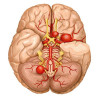

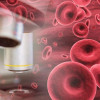
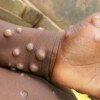
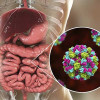
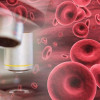


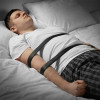

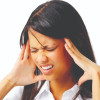
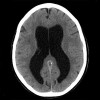
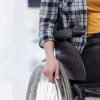
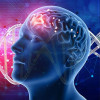
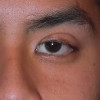



Please login to comment on this article